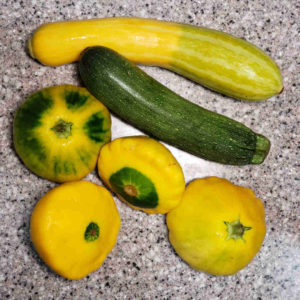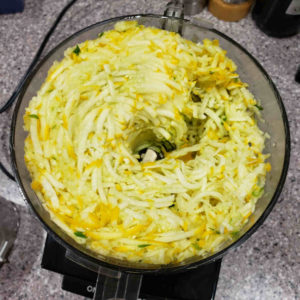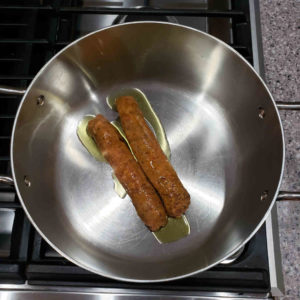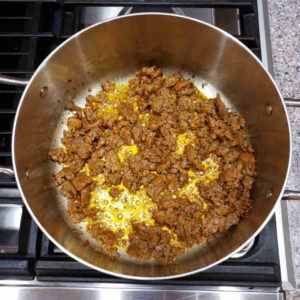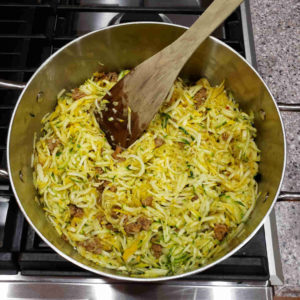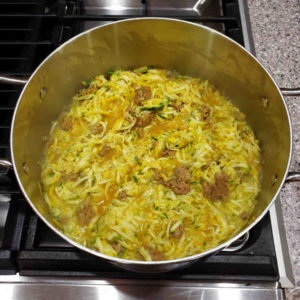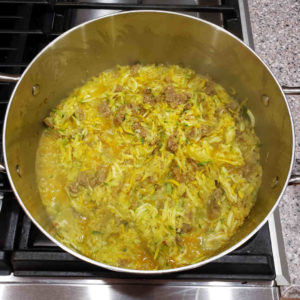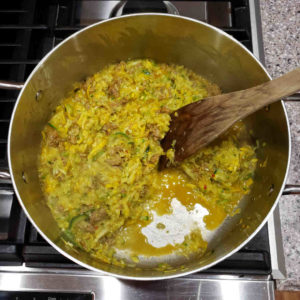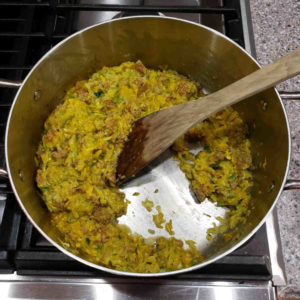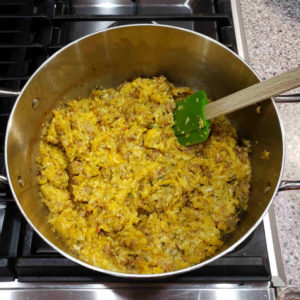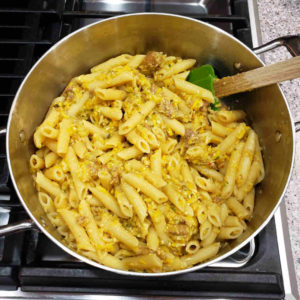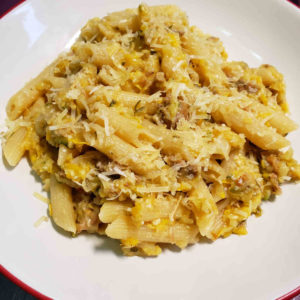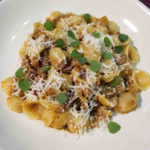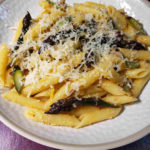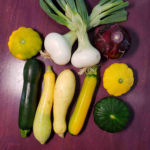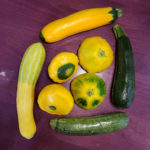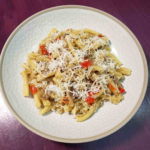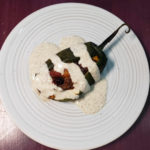About Melting Summer Squash
As I talk about in my A Lot About Zucchini and Other Summer Squash post, zucchini isn’t the only summer squash. There are many varieties of summer squashes which can be used interchangeably in melted recipes. Once you make anything with melted summer squash, you’ll see how you can use this technique to make so many different dishes such as pizzas, grilled cheese, and frittatas. Melting is my single favorite way to prepare summer squash. The reason is, as I also explain in my All About Zucchini and Other Summer Squash post, that summer squash is very high in water content. Melting sweats off much of the water, reducing the squash into something with much more flavor and giving it a rich and creamy texture. “Melting” describes the result more than it does the technique. The technique is to first grate the squash and then to sauté it with either butter or olive oil and a pinch of salt until the result is reached. It should take between 15 and 20 minutes. You can also season the melted squash by infusing garlic or fresh rosemary into the olive oil used to sauté. Or you can add a teaspoon of dried thyme or oregano at the start of the sauté, or other chopped fresh herbs towards the end of the sauté. It’s also really nice with just that pinch of salt that went in at the beginning.
Making the Dish
Start by grating up two and a half pounds of summer squash. That may seem like a lot, especially when you see how big the pile of grated squash is. It totally fills my 11-cup food processor. You can do the grating with a box grater, and I do for recipes that only require one pound of grated squash. But for this much squash, it’s worth it to break out the food processor to do the job. Anyway, as you sauté that big pile of squash, it will release a bunch of water and reduce itself down to less than half its original size.
Next, sauté eight ounces of a really good, spicy Italian sausage in a tablespoon or two of olive oil in a large pot. If you use Italian sausage links, remove the casings before putting them in the pan. Use a pair of wooden spatulas to break the sausage into little bits as you sauté. The pork fat that renders out of the sausage and mingles with the olive oil will provide the savory backbone that permeates this dish.
When the sausage is cooked, browned a bit, with its fat rendered, add the grated squash with a teaspoon of salt. The salt helps with the melting process by pulling water out of the squash. Stir well to integrate the cooking fats, sausage, and salt into the squash. Early in the sauté process, the squash will give up a bunch of water, and you will see it poaching in its own juices. As that water boils off, the sweating of the squash will slow down. Eventually it will reach a point where it’s not giving off any more water, and the texture of the squash is creamy. At this point, it’s ready. Stir in the lemon juice, lemon zest and grated cheese to finish.
Prepare a pound of dried pasta according to the package directions in generously salted water. Drain the pasta and transfer directly to the big pot with the lemon, squash, and sausage mixture. Stir to combine and serve garnished with more grated cheese.
Photographic Walk Thru of the Recipe
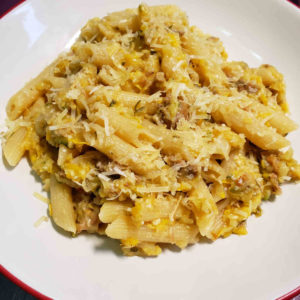
Pasta with Melted Summer Squash, Lemon and Sausage
Ingredients
- 2.5 lb zucchini or other summer squash grated with box grater or food processor
- 8 oz good Italian sausage casing removed
- 2 oz grated aged Asiago cheese see note, plus more for serving
- Zest of 1 lemon
- freshly squeezed juice of one lemon
- 16 oz dried penne pasta (or other short pasta)
- olive oil
- salt and black pepper
Instructions
For the Sausage and Asparagus:
- Start by sautéing the Italian sausage in a tablespoon or two of olive oil over medium high heat. Using a pair of wooden spatulas, smoosh and break up the sausages into little bits. Sauté until the sausage is thoroughly cooked and starting to brown. Expect about 5 minutes.
- Add the grated squash with one teaspoon of salt and continue to sauté. The total melting process takes about 15 minutes. Early on, you will see the squash poaching in its own juices. The release of water will slow over time. When you can swipe a clean swath across the bottom of the pan and water does not fill in the empty space, you are done.
- While the squash is sautéing, prepare the pasta in a separate pot according to the package directions in generously salted water.
- Finish the squash by stirring in the lemon juice, lemon zest and grated cheese. Drain the pasta and immediately combine with the lemony squash and sausage mixture.
- Serve hot, garnishing with a bit more grated cheese.
Notes
- I suggest aged Asiago cheese because my preferred cheese for this recipe is Calvander from Chapel Hill Creamery. Other aged grating cheeses also work well, such as Parmesan or Pecorino Romano.

